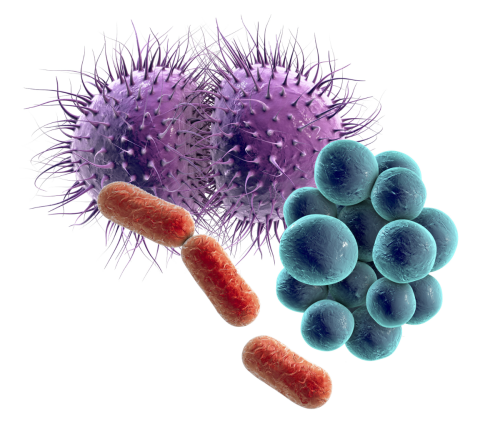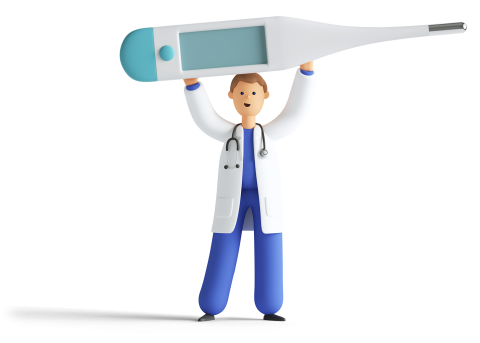
AMR
Antimicrobial Resistance
What is Antimicrobial Resistance?
Antimicrobial resistance (AMR) represents a global public health threat.(1) Antimicrobials are medicines that are used to prevent and treat infections in humans, animals and plants. They include antibiotics, antivirals, antifungals and antiparasitics.(1)
Antimicrobial Resistance (AMR) occurs when bacteria, viruses, fungi and parasites change over time and stop responding to medicines, making infections harder to treat, increasing the risk of disease spread, severe illness and death.(1)
While some microorganisms are naturally resistant to certain antibiotics, a worrying threat arises when bacteria, normally susceptible to antibiotics, become resistant as a consequence of genetic changes (acquired resistance), survive in the presence of the antibiotic, and then continue to multiply causing prolonged illness or death.(2)
Infections caused by resistant bacteria may require specialist care in hospital as well as more expensive and potent antibiotics, with potentially serious side effects.(2)
«Before the discovery of antibiotics, thousands of people died from bacterial diseases, even in the case of mild or superficial infections. Since the discovery of antibiotics, more and more bacteria have evolved clever mechanisms of resistance to overcome their effects and are no longer susceptible».(2)
Why Antimicrobial Resistance is a global concern?
Resistant bacterial infections can affect people at any stage of their life. (3) Over the years, the use and misuse of antibiotics, poor infection control practices and global travel and trade, have all contributed to the development and spread of AMR. (1) As a result, an increasing number of infectious diseases have become difficult to treat with dramatic health and
economic consequences (1)
The cost of AMR to national economies and their health systems is significant as it affects productivity of patients or their caretakers through prolonged hospital stays and the need for more expensive and intensive care. (1)
Antibiotic resistance is a major public health issue because resistance is increasing and few new antibiotics have been discovered and marketed in recent years.(2)
«Drug-resistant diseases already cause around 700,000 deaths globally a year, a figure that could increase to 10 million deaths globally per year by 2050 - the most alarming scenario if no action is taken. Around 2.4 million people could die in high-income countries between 2015 and 2050 without a sustained effort to contain AMR».(4)
The economic damage of uncontrolled antimicrobial resistance could be compared to the shocks experienced during the 2008-2009 global financial crisis, as a result of dramatically increased health care expenditures, impact on food and feed production, trade and livelihoods and increased poverty and inequality. (4)
«Antimicrobial resistance is a global problem that impacts all countries and all people, regardless of their wealth or status». (5)

Antibiotics use and Antimicrobial Resistance
There are more than 15 different classes of antibiotics that differ in their chemical structure and their action against bacteria. An antibiotic can be effective against one or multiple types of bacteria. (2)
When exposed to antibiotics, susceptible bacteria are inhibited or killed while resistant bacteria can continue to grow and multiply, spreading and causing infections in other people who have not taken any antibiotics. (2) Antibiotics also kill helpful germs that provide protection; therefore, without the helpful germs, resistant germs have an even bigger advantage. (3)
Antimicrobial resistance naturally occurs over time, by mutations in the bacteria’s genes, usually through genetic changes. (1) However, the misuse and overuse of antibiotics continues to accelerate this process. In fact, antibiotics are often overused and misused in people and animals. (1) As a result, antimicrobial resistant-microbes are found in people, animals, food and the environment and can spread easily between people and animals. (1)
«Once antibiotic resistance emerges, it can spread to new settings and through countries». (3)

The correct use of antibiotics
The exposure of microorganisms to antimicrobial agents creates a selective pressure that can lead to the development of resistance. Therefore, inappropriate use of antimicrobial agents accelerates the emergence and dissemination of resistance. (6)
When they are required, antibiotics should be used appropriately. This means taking it as prescribed – at the correct dose, at the right intervals and for the prescribed duration. This optimizes their effectiveness to cure the infection and minimize the emergence of resistance. (7)
Even when antibiotics are used correctly, antibiotic resistance can sometimes emerge as a natural adaptive reaction of the bacteria. Whenever antibiotic-resistant bacteria develop, infection control precautions are essential to prevent the spread from carriers to other patients or persons. (7)
«It is extremely important that antibiotics are taken correctly, avoiding excessive and inappropriate use, that accelerates the emergence and spread of antibiotic-resistant bacteria». (2)
MC-ID-04-2021
- www.who.int/news-room/fact-sheets/detail/antimicrobial-resistance - updated version
- antibiotic.ecdc.europa.eu/en/get-informedfactsheets/factsheet-general-public
- www.cdc.gov/DrugResistance/Biggest-Threats.html
- Securing The Future From Drug-resistant Infections
- UK’s five-year national action plan
- EU Guidelines for the prudent use of antimicrobials in human health
- www.uicc.org/what-we-do/thematic-areas-work/antimicrobial-resistance-and-its-impact-cancer-care



